Introduction
After a fatty meal, the fats have a sequence of stages to go through in the body. Firstly the fats have to get digested in the intestine with the help of bile salts (For more information read Digestion of Fats). After digestion it is either metabolized to produce energy after activation and transportation to the mitochondria from the cytosol via the carnitine shuttle or it is stored in the adipose tissue as lipid droplets. For utilization of these stored fats, the fatty acids from the lipid droplets undergo mobilization and cellular uptake by the target cell (For more information read Mobilization and Cellular Uptake of Fats). Once in the target cell, for the fatty acid to undergo metabolism it has to reach the mitochondria as all the enzymes required for fatty acid oxidation are present there.
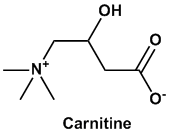
The fatty acids have to undergo activation in the cytosol by getting converted to fatty acyl CoA to pass though the mitochondrial membrane with the help of carnitine (present as L-carnitine, the active stereoisomer) after which they undergo β-oxidation in the mitochondria. Fatty acyl-CoA formed in the cytosol can also be used for synthesis of phospholipids and triacylglycerols. The process of activation and transportation via the carnitine shuttle of these fatty acids is discussed in detail below with the help of an animation. Press the play button to progress in the animation.
Fatty Acid Activation and Transportation to the Mitochondria
For oxidation, fatty acids with carbon chains more than 14 carbons need activation before passing through the mitochondrial membrane. Free fatty acids obtained from diet or which are stored in the adipocytes are mainly 14 carbons or more in length. Fatty acids having ≤12 carbons can surpass activation and can easily pass through the mitochondrial membrane. For transport through the mitochondrial membrane three key enzymes are involved.
[swfobject]3057[/swfobject]
Discussion
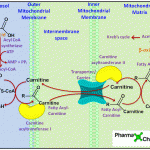
- For activation of fatty acids, enzyme thiokinase or acyl-CoA synthetases convert the fatty acids to fatty acyl-CoA. These enzymes are a family of three isoenzymes having activity against specific chain length fatty acids. Thus there are three thiokinases each specific for short, intermediate and long carbon chains. Fatty acyl-CoA is formed by the formation of thioester bond between the carboxyl group of the fatty acid and the thiol group of coenzyme A. This reaction also involves use of energy, by breakdown of ATP to AMP + PPi and is an irreversible reaction.
- This activated fatty acid (fatty acyl-CoA) is now transported through the outer mitochondrial membrane with the help of carnitine (β-hydroxy-γ-trimethyl aminobutyrate). In the presence of the enzyme carnitine acyltransferase I [also called as carnitine palmitoyltransferase I (CPT-I)] present on the outer mitochondrial membrane,fatty acids get attached to the hydroxyl group of carnitine to form fatty acyl-carnitine. It is not yet clear whether the fatty acyl-carnitine is formed in the cytosol or in the intermembrane space.
- The fatty acyl-carnitine formed is transported across to the mitochondrial matrix in exchange for carnitine via carnitine–acylcarnitine translocase by facilitated diffusion through the carnitine/acyl-carnitine transporter or carrier.
- Carnitine acyltransferase II [also called as Carnitine palmitoyltransferase II (CPT-II)] present on the inner mitochondrial membrane catalyses the transfer of the acyl group from fatty acyl-carnitine to coenzyme A thereby forming fatty acyl-CoA and free carnitine.
- This free carnitine returns backs to the intermembrane space via the carnitine/acyl-carnitine transporter or carrier ready to be used for the next cycle.
- The fatty acyl-CoA now present in the mitochondrial matrix is ready for β-oxidation by the enzymes present there to yield acetyl-CoA which then enters the Kreb’s cycle to give energy.
Note: The coenzyme A participating in the activation of fatty acids in the cytosol is different from the coenzyme A present in the mitochondrial matrix to form fatty acyl-CoA denoting that there are separate cytosolic and mitochondrial pools of coenzyme A.
Regulation of Carnitine Shuttle
- This carnitine shuttle is a rate limiting step in the oxidation of fatty acids in the mitochondria and thus fatty acid oxidation can be regulated at this step.
- Malonyl CoA, an intermediate of fatty acid synthesis present in the cytosol is an inhibitor of carnitine acyltransferase I. This indicates that when fatty acid synthesis is in progress, oxidation of fatty acid cannot occur at the same time as the carnitine shuttle is impaired by inhibition of carnitine acyltransferase I.
Importance of Carnitine
As we just learnt that carnitine plays a crucial role in the transport of the fatty acids across the mitochondrial membrane and thus gain access to the enzymes for breakdown of long chain fatty acids.Thus deficiency of carnitine can lead to decreased ability of the tissue to utilize long chain fatty acids as energy.5 Out of the two stereoisomers in which carnitine exists, L-carnitine is the active form while D-carnitine is biologically inactive.
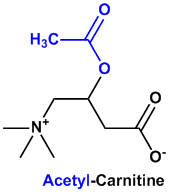
Carnitine is either obtained from synthesis in the liver, from trimethyl-lysine residues generated during protein catabolism, or from the diet. The main source of carnitine is meat (generally red meats) from cows and pigs and dairy products. Lower amounts are present in beans, nuts,vegetables,fruits,cereals etc. Thus vegetarians may always be at a risk of having lower levels of carnitine in their system. L-carnitine nutritional supplements are thus available for people with deficiency of carnitine. It has been reported that acetyl-L-carnitine nutrional supplements might be better absorbed by the body and therefore have better pharmacological effects as a dietary supplement.6 L-Carnitine and acetyl-L-carnitine supplements are known to provide cardiovascular and neurological benefits and is believed to help in increasing sperm motility as well.
Recommended Texts and References
- David L. Nelson and Michael M. Cox, Lehninger Principles of Biochemistry 6th Edition
- Jeremy M. Berg, John L. Tymockzo and Luber Stryer, Biochemistry 7th Edition
- Reginald H. Garrett, Charles M. Grisham, Biochemistry by Reginald H Garrett 5th Edition
.
- U. Satyanarayana, U. Chakrapani, Biochemistry by U. Satyanarayana. 3rd Edition.
- Longo N, Amat di San Filippo C, Pasquali M. Disorders of carnitine transport and the carnitine cycle. Am J Med Genet C Semin Med Genet. 2006;142C(2):77-85.
- Liu J, Head E, Kuratsune H, Cotman CW, Ames BN. Comparison of the effects of L-carnitine and acetyl-L-carnitine on carnitine levels, ambulatory activity, and oxidative stress biomarkers in the brain of old rats. Ann N Y Acad Sci. 2004;1033:117-31.

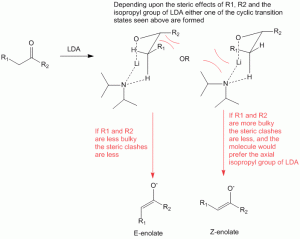
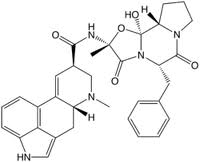
thaxx so much for this useful material.
A very lucid explanation